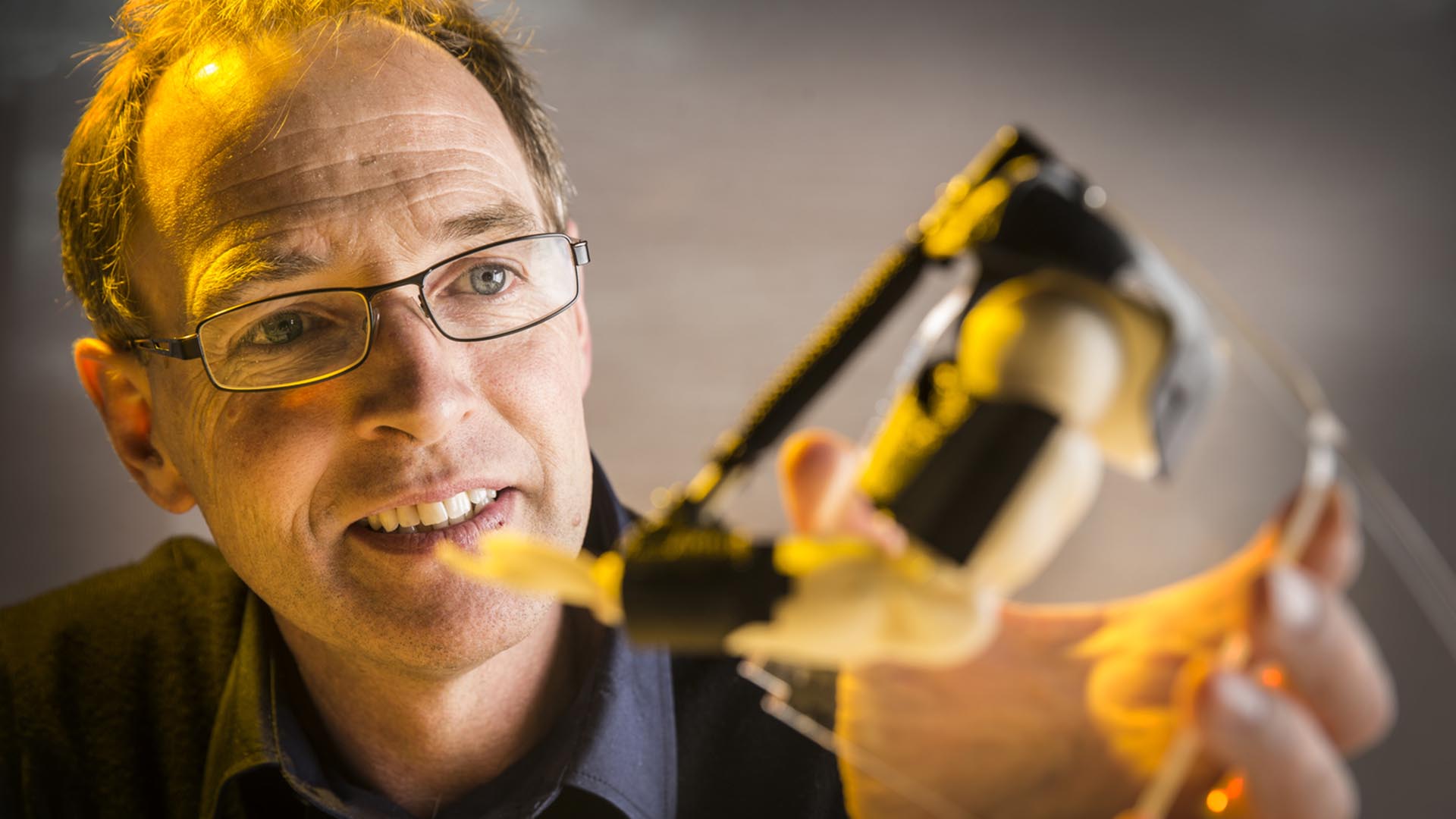Senior Professor Geoff Spinks announced as a winner in the Science Breakthroughs Of The Year category at the Falling Walls Science Summit

The development of the next generation of non-invasive surgery or robotic surgical systems, like miniature tweezers, prosthetic hands or dexterous robotic devices, is bringing researchers a step closer to matching the performance of a natural muscle using artificial muscles created in the lab.
University of Wollongong (UOW) researcher Senior Professor Geoff Spinks, from the Australian Institute for Innovative Materials, has been announced as one of ten global winners in the Engineering and Technology category for Science Breakthrough of the Year 2021 at the Falling Walls Science Summit, being held in Berlin from 7-9 November, for his world-leading Artificial Muscle Material research.
The achievement acknowledges the extraordinary research breakthrough by Professor Spinks and his team that has led to the development of artificial muscles in miniature devices that could be applied in medicine and robotics.
Professor Spinks and an international research team have developed various types of artificial muscles in the past that bend, rotate or contract in length, by twisting and coiling carbon nanotube or polymer yarns. The science has enabled them to make artificial muscles as thin fibres or films that are especially well suited to microscopic devices.
The most recent breakthrough happened as an unexpected outcome of their studies. Thanks in part to the inspiration from nature and DNA supercoiling.
“We were investigating microfibres made from hydrogel materials when we happened upon the supercoiling behaviour. It was then that we realised that our fibres were mimicking DNA folding,” Professor Spinks said.
“The double helix of DNA is one of the most iconic symbols in science. By imitating the structure of this complex genetic molecule, we have found a way to make artificial muscle fibres far more powerful than those found in nature, with potential applications in many kinds of miniature machinery such as prosthetic hands and dexterous robotic devices.”
As a result of this discovery, the fibre shrank by up to 90 per cent of its original length. When compared to a human muscle, the supercoiling fibre is shown to be 30 times smaller in diameter. A huge benefit to applications where space is limited.
“Our discovery offers an exciting new type of high-performance fibres that contract just like our own muscles. These fibres can be easily attached to miniature machines like tools for robotic surgery,” Professor Spinks said.
A number of prototypes have been developed including robotic fish, a micromixer of fluids and using supercoiling muscle fibres to open and close miniature tweezers.
“We still have much to do to turn our discovery into practical devices and we are currently working to solve these remaining issues,” Professor Spinks said.
The Falling Walls Science Breakthroughs of the Year takes place on the anniversary of the historic fall of the Berlin Wall on 9 November. The conference provides a stage for outstanding research presented in inspiring presentations. From more than 1000 nominations from 115 countries, around 200 Winners were identified by Falling Walls juries.
Professor Spinks said the recognition of his research on the global stage was a great honour. “The Falling Walls Foundation is doing a fantastic job at promoting advances in all fields of endeavour to a massive global audience. It’s a great honour to be recognised by such a prestigious organisation.”
Falling Walls Science Summit is a leading international, interdisciplinary and intersectoral forum for scientific breakthroughs and science dialogue between global science leaders and society.







